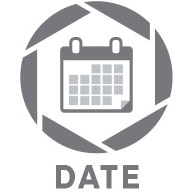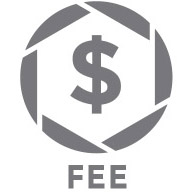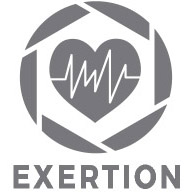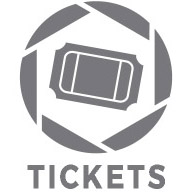PhotoPills Bootcamp: Big Bend
With PhotoPills, your ideas have no bounds. During 5 days and nights of learning, scouting and shooting in Texas' Big Bend National Park, we’ll explore the ins and outs of one of the most powerful tools a photographer can keep in their pocket. Learn to plan for and capture the Milky Way, sunsets, moonsets, star points, star trails and more in this desert jewel of the park system.
Workshop Details
April 17-21, 2025 — Completed
This is a 5-night, 5-day workshop. Your adventure begins on the morning of April 17, and ends after a final night shoot on April 21.
$2,295. Register below.
Skill level
Intermediate and above. Participants should have a firm grasp of the basic principles of photography and of their cameras, and have a comfortable understanding of night photography fundamentals.
Group size
14, with 2 instructors — 7:1 ratio
NPS website
Workshop Leaders
Registration
This event has passed. Thanks for your interest!
| • Deposit of $600 is required to reserve your spot at the workshop. |
| • Balance of $1,695 is due on January 14, 2025. → Pay balance here. |
| • You may choose the “Pay in Full” ticket if you desire to pay all at once. |
| • Last day for a cancellation request is January 13, 2025. (see cancellation and refund policy) |
| • The workshop fee does not include lodging, food, airfare, entrance fees, or transportation to or during the workshop. |
The Big Bend PhotoPills Experience
This workshop is all about learning how to master PhotoPills in the best place to do so: in the field. And not just any field—we’ll be learning, scouting and shooting in one of the U.S.’s premier places for day and night photography, Texas’ Big Bend National Park.
Each day we’ll learn more about PhotoPills and how to use it to plan epic photographs. We’ll go over everything from how to configure the settings so the app works better for you, to how to use the Planner and other features to find and photograph the sun, moon, stars, Milky Way, etc.
Then we’ll venture into the park and use what we learned in the classroom to scout scenes for sunset, moonset and nighttime photography. Then we’ll just spend the evening shooting. Sound like fun? Yeah, we think so too!
Big Bend sits under some of the darkest skies in North America. In fact, it’s one of only a few national parks in the U.S. that has night skies designated as gold-tier by Dark Sky International. So, there aren’t too many places that can compare in terms of where to get down with some nocturnal photography!
We will explore the many photo subjects the park has to offer. Desert landscapes. Rock formations. Mountains. Canyons. Cactuses. Ruins. We’ll work at some of the park’s iconic locations, as well as at some off-the-beaten path spots along dusty dirt roads, all while learning and using PhotoPills to be in the right place, at the right time, for our best photographs.
What You Should Know
This workshop caters to knowledgeable photographers with an intermediate skill set. Participants should have a firm grasp of the basic principles of photography and of their cameras, and have a comfortable understanding of night photography fundamentals.
Note that the focus of the education on this workshop is not night photography. If you are not already comfortable with the fundamentals of night photography, we recommend taking a Beginner or All Levels workshop with us before taking our PhotoPills course. We will be happy to offer advice and answer questions about both day and night photography, but the focus of the education—in the classroom and in the field—will be on using PhotoPills to level up the photography skills you have already developed.
You do not need to know anything about how to use PhotoPills before attending this workshop, but you should bring a device that is capable of running it—either a smartphone or a tablet, if not both.
If you would like to attend this workshop but are unsure whether you have adequate night photography skills, we can offer pre-workshop tutoring to get you ready for your adventure with us. Alternatively or additionally, a few of us have written books that may be productive pre-workshop reads.
What You Will Learn
We will cover all of the features of PhotoPills that a landscape photographer might want to use in a natural environment. We will teach these features in a classroom setting, then we'll venture into the field to put your new skills to use by planning and shooting epic photographs in the national park.
While in the field, the instructors will reinforce the classroom learning by demonstrating how they would use PhotoPills in that particular location, and then will work with participants one-on-one to make sure everyone masters the app and executes photos they have individually planned. Our locations have generous room to explore, so everyone will be able to spread out and use PhotoPills to plan and capture their own unique visions.
Our aim is to send you home after the workshop comfortable with using this powerful photo-planning tool, as well as with some amazing photos of this inspiring place.
TOPICS COVERED WILL INCLUDE how to use PhotoPills to:
plan for specific photo locations while on or off site
locate where and when the sun and moon will rise and set
find where the Milky Way will be in the sky at different times of night
pinpoint the North Star and strategize star circles
determine exposures for the sharpest star points
calculate long exposures for star trails or light painting
figure degrees of overlap between pano frames
and more …
Hyperfocal Distance
Of particular note, the workshop will feature a full day of learning how to use hyperfocal distance to maximize depth of field, allowing you to photograph scenes with sharp foreground subjects and sharp background skies with the large apertures necessary for night photography. PhotoPills offers several features that help calculate and visualize the hyperfocal concept.
Night Conditions
Logistics & General Info
Travel
Big Bend is not the easiest national park to get to. But the trip is manageable, and well worth the effort! All the major airports are a fair distance away, but the drive through the desert is spectacular.
Nearby Airports:
Midland/Odessa (MAF) — 4 hours from Study Butte, Texas
El Paso (ELP) — 4 hours, 45 minutes
San Antonio (SAT) — 6 hours, 45 minutes
Rental Car
You will need a rental car.
There is no need for four-wheel-drive.
If you are interested in carpooling or sharing a rental car, let us know and we will try to connect you with another attendee looking for the same.
Lodging & Food
You are responsible for arranging and paying for your own accommodations and meals.
Lodging
We will be staying at the Big Bend Casitas in Study Butte (3 miles from the west entrance to the national park). Each casita has a porch, bird-watching garden and kitchenette that includes a sink, small refrigerator and microwave, along with dishes, glasses, utensils, etc. We also have access to outdoor grills in the courtyard.
You are not required to stay at the official workshop lodging, though doing so does make it easier to meet with the group each day. There are other lodging options in Study Butte and Terlingua, including camping.
If you are interested in sharing a casita, let us know and we will try to connect you with someone like-minded in the group.
Food
Study Butte and nearby Terlingua have a few very good and interesting food options, as well as an excellent coffee place.
The town also has a small (but big enough) grocery store.
We encourage eating two meals per day—a good breakfast and a great late lunch.
When on the night shoots, you may wish to bring snack food or a sandwich and plenty of water.
Weather
Big Bend is really, really hot in the summer. Which is why we’re holding the workshop in the spring. Expect daytime highs in the 70s, lows in the 50s, and very low humidity. It’s the desert, so night temperatures can drop considerably lower, particularly in the Chisos Mountains.
Recommended Attire
Shorts and short-sleeve shirts for daytime, light pants and long-sleeve shirts for night.
A sweatshirt and medium-weight jacket will likely be useful, and a base layer might not be a waste of packing space. Layers are good.
Comfortable and protective shoes are recommended for getting around—quality trail shoes or hiking boots would be optimal.
Exertion Level
The exertion level of this workshop is Easy. (See more about our classifications.)
No vigorous activity will be required during the workshop, but please consider your physical abilities prior to registering. There won’t be any long hikes, but there will be trails, and there will be cacti to avoid, and you should be comfortable carrying your own equipment over uneven ground in the dark.
Considerations
Please read our FAQs section for more information about skill and gear requirements, and other information that pertains to all our workshops.
If you have questions, please contact us—we're happy to talk it over with you.
Night Shadows …
“We spent more than a week exploring and photographing every corner of the park we could reach.”
My first trip to Big Bend—in May 1999—included the hottest day I’ve ever lived. (And I spent a month in the Australian Outback in summer.) The sunset was amazing, but the searing temperatures sapped us of all our energy. We wanted to do little else but stay still and try to breathe.
My second trip was better planned. We went in winter, when the Chihuahuan Desert is more temperate and more (let’s be honest) fun to explore.
On that second trip, with my friend Steve, we spent more than a week exploring and photographing every corner of the park we could reach. Into canyons. Into backcountry. On trails. On dirt roads. Among trees. Among boulders. Around ruins. Around bends of the Rio Grande. And, oh so often, under very dark desert night skies.
The darkness is all-encompassing. The landscape falls in shadow, yet still lives and breathes in front of the camera. The stars overwhelm you. Look closely. Can you see your shadow from the starlight? You might.



































